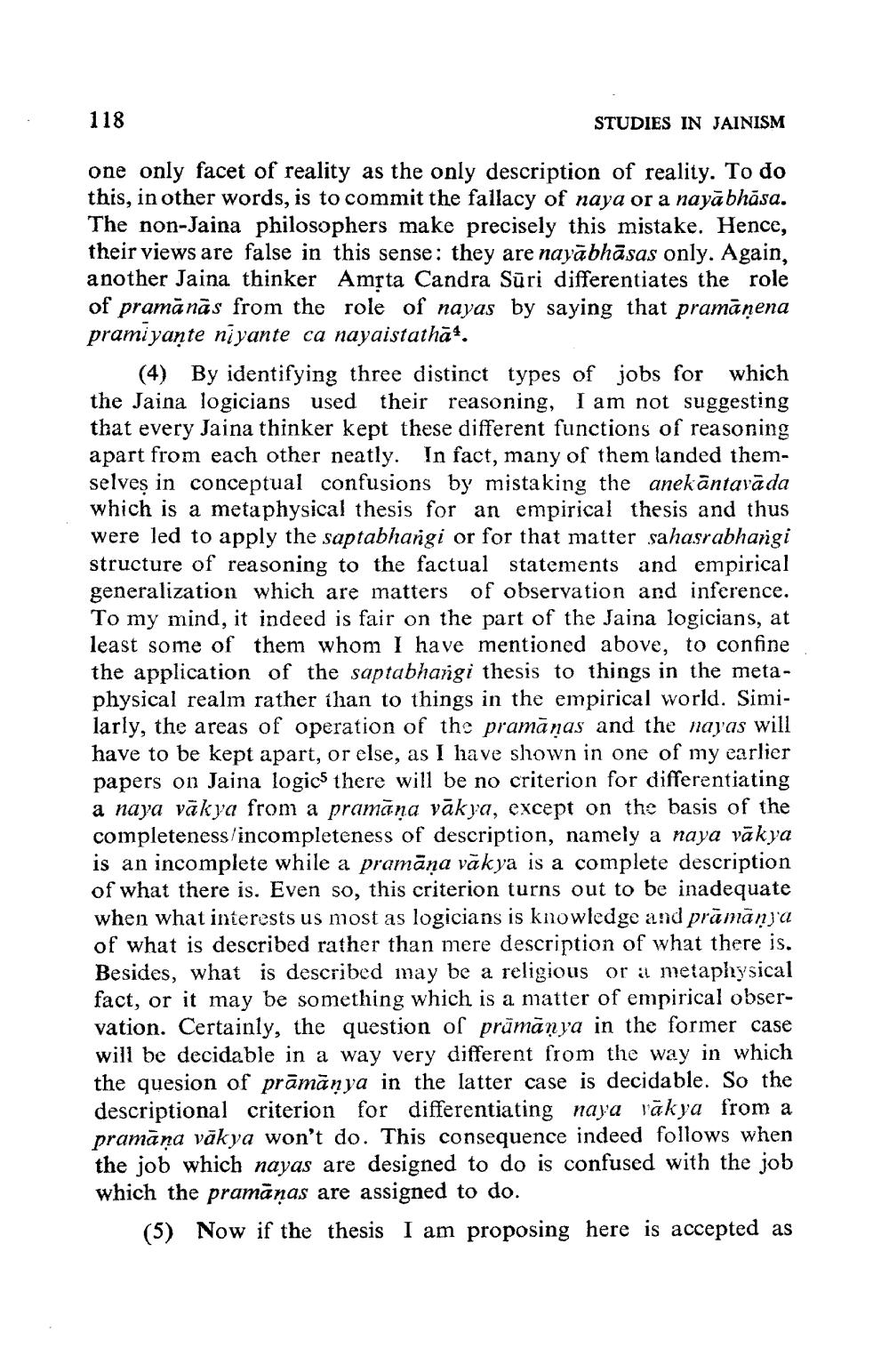________________
118
STUDIES IN JAINISM
one only facet of reality as the only description of reality. To do this, in other words, is to commit the fallacy of naya or a nayābhāsa. The non-Jaina philosophers make precisely this mistake. Hence, their views are false in this sense: they are nayābhāsas only. Again, another Jaina thinker Amộta Candra Sūri differentiates the role of pramā nās from the role of nayas by saying that pramāṇena prami yante niyante ca nayaistathā4.
(4) By identifying three distinct types of jobs for which the Jaina logicians used their reasoning, I am not suggesting that every Jaina thinker kept these different functions of reasoning apart from each other neatly. In fact, many of them landed themselves in conceptual confusions by mistaking the anekāntavāda which is a metaphysical thesis for an empirical thesis and thus were led to apply the saptabhangi or for that matter sahasrabhangi structure of reasoning to the factual statements and empirical generalization which are matters of observation and inference. To my mind, it indeed is fair on the part of the Jaina logician least some of them whom I have mentioned above, to confine the application of the saptabhangi thesis to things in the metaphysical realm rather than to things in the empirical world. Similarly, the areas of operation of the pramānas and the nayas will have to be kept apart, or else, as I have shown in one of my earlier papers on Jaina logics there will be no criterion for differentiating a naya vākya from a pramana vākya, except on the basis of the completeness/incompleteness of description, namely a naya vākya is an incomplete while a pramāna vākya is a complete description of what there is. Even so, this criterion turns out to be inadequate when what interests us most as logicians is knowledge and prāmānja of what is described rather than mere description of what there is. Besides, what is described may be a religious or a metaphysical fact, or it may be something which is a matter of empirical observation. Certainly, the question of prāmānya in the former case will be decidable in a way very different from the way in which the quesion of prāmānya in the latter case is decidable. So the descriptional criterion for differentiating nava vākya from a pramāna vākya won't do. This consequence indeed follows when the job which nayas are designed to do is confused with the job which the pramāņas are assigned to do.
(5) Now if the thesis I am proposing here is accepted as




